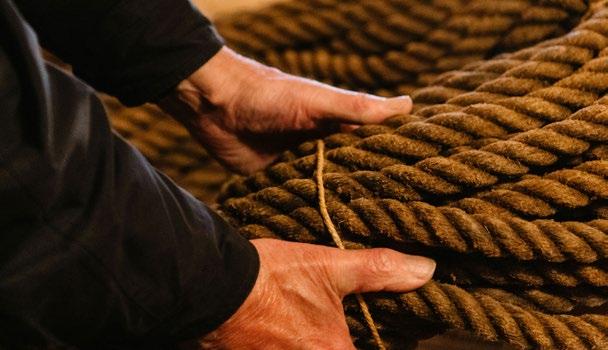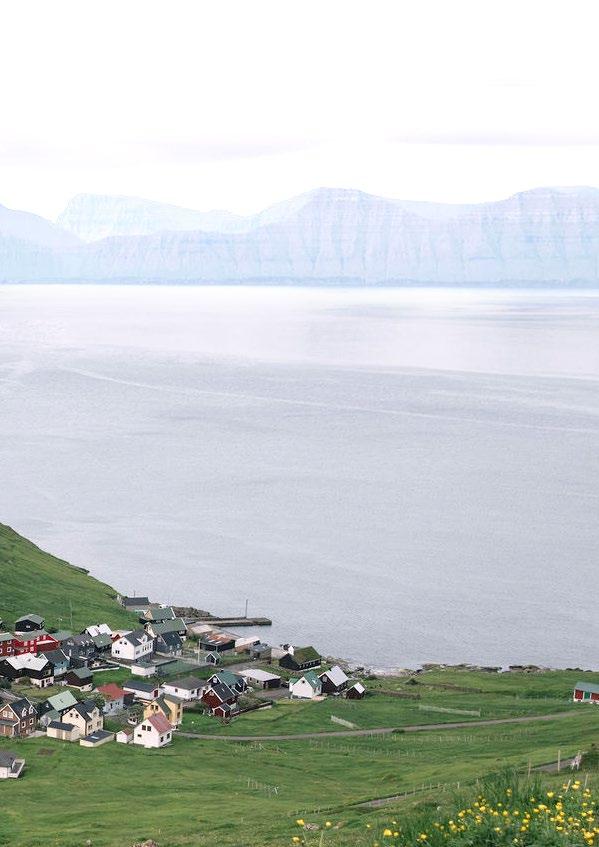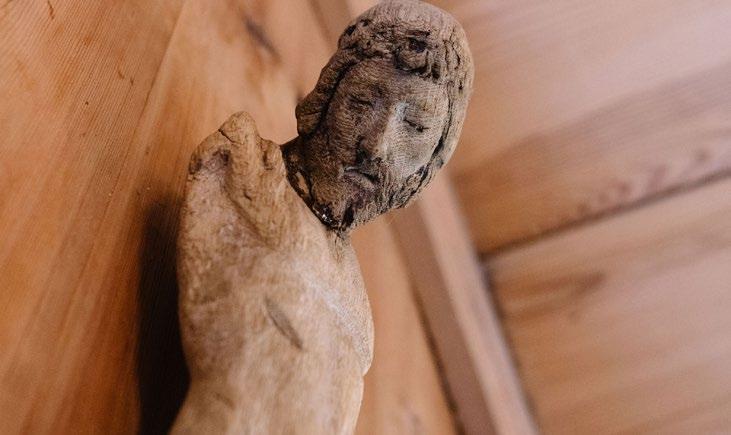
3 minute read
2 Funnings kirkja (The Church of Funningur
2 FUNNINGS KIRKJA
(The Church of Funningur)
INFO
Consecrated: 1847
Address: Niðri í Túni 475 Funningur
Opening hours: Monday and Thursday 12 p.m.–2 p.m
Church service: 1 May 30 September Sundays 11 am
1 October 30 April Sundays 12 pm
Surrounded by mountains lies the beautiful old village, Funningur. The river that runs between the colourful houses also separates Funnings kirkja from the rock-walled cemetery.
Funnings kirkja is one of ten remaining artful wooden churches built between 1829 and 1847. Its exterior is characteristic with its low foundation, tarred walls, white windows, white tower and turf roof. Prior to this church, four churches have resided on the same spot. The first was demolished in 1609 to make space for the second. The current church is, along with the church of Porkeri, the youngest of the wooden churches in the Faroes. Both were consecrated in 1847.
In Funningur, there are close ties between everyday life, the church and religion. It was customary to store the rope used for catching birds in the steep cliffs of the north in the church attic, and only men going on the hunt were allowed to fetch the rope from the attic.

HISTORY AND ARCHITECTURE
IIn its interior, the church is particularly beautiful with its carved walls and unpainted wood, which over time has turned a golden colour. Between the choir and the church, and in front of the altar and the sacristy, there is a detailed and brilliant artistically carved wall. It has been said that it resembles the icon walls of orthodox churches, only
with symbolism from Faroese culture and tradition. According to sources, an elderly woman from Funningur recounts from her grandmother that it was the smiths themselves who did the carving. As in most of the wooden churches of the Faroes, a wooden board, with the year of completion and the initials of the craftsmen engraved in it, hangs above the porch entrance. By all accounts, most of the craftsmen were local men from Funningur and Gjógv.
THE FOOTPATH BETWEEN FUNNINGUR AND GJÓGV
In the past, the villages of Gjógv and Funningur used to have very close ties. They constituted one parish and had a joint cemetery until 1919 and a joint church until 1929.
Conditions often made sea travel between the villages impossible; as a result, the footpath called Mannagøtan (The Path of Man) was the only way out of the village. People from Gjógv have walked to Funningur for services. They carried children to their baptism, came for wedding ceremonies and funerals of loved ones.
Not everyone walked all the way to Funningur. Those who could not manage the steep hill on the way back from Funningur would sit at Kirkjusteinur (church rock) from where they could see the church. At the pass of Gjógv (Gjáarskarð), there is a rock called Líksteinur (corpsestone) where they would take a break while the coffin rested on the stone.
Gjáarkirkja (the Church of Gjógv) was consecrated in May 1929. It was consecrated by Jákup Dahl, Dean, and it was the first church consecrated in the Faroese language.

FURNISHINGS AND OBJECTS
The church has an unpainted crucifix without arms that originates from the first church from around 1690. Legend has it that it washed ashore in the river-mouth below the church. The octagonal baptismal font from 1835 was originally unpainted. The baptism bowl is made of tin and dates from 1735.
SOME OTHER FACTS
Immediately upon entering the church, you will see a plate with a message from the priest, asking people to refrain from spitting on the floor.
The outermost chandelier was given as a present from the people of Gjógv when they got their church in 1929.
A sheepskin lying in the altar ring was a present received in 1962.
The church bell bears the inscription: “Komið til mín” (Come to me).
The theme of the altarpiece, given to the church in the late 1920s, is the Crucified.









